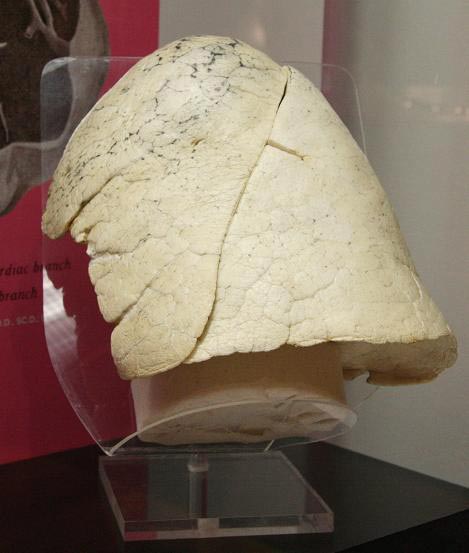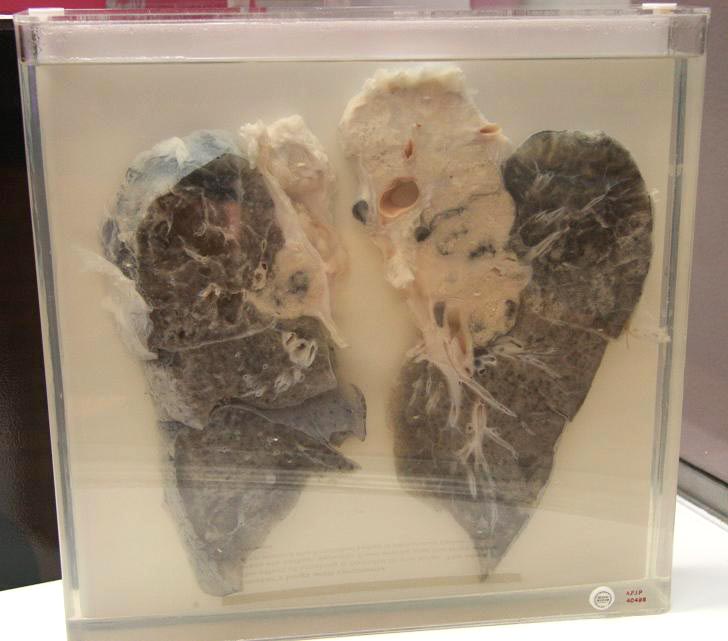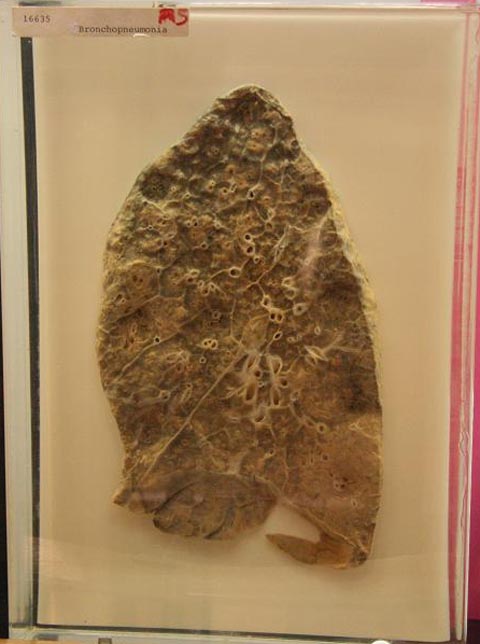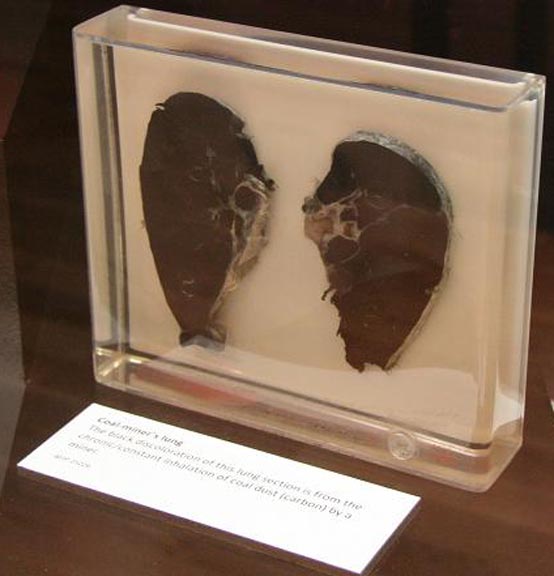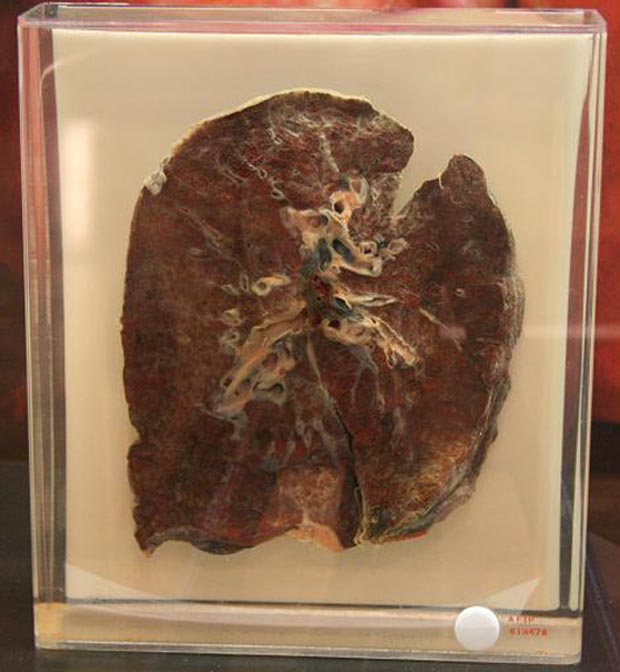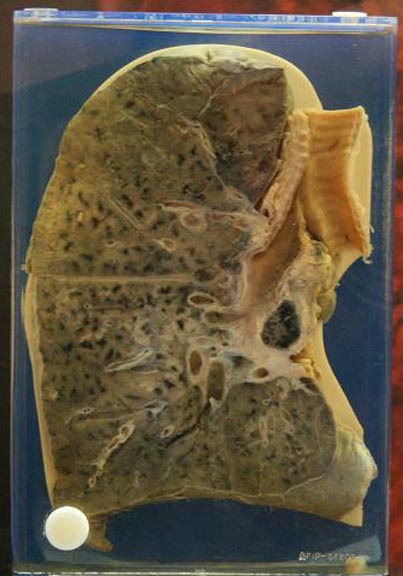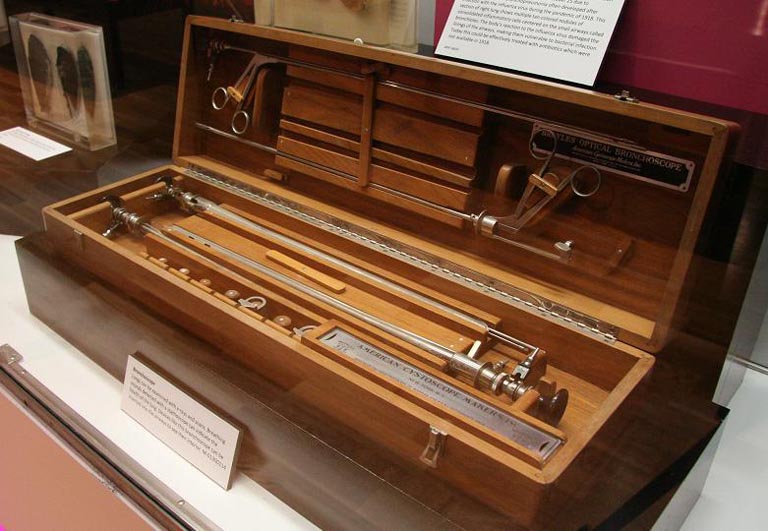Visibly Human Health and Disease in the Human Body
Respiratory System
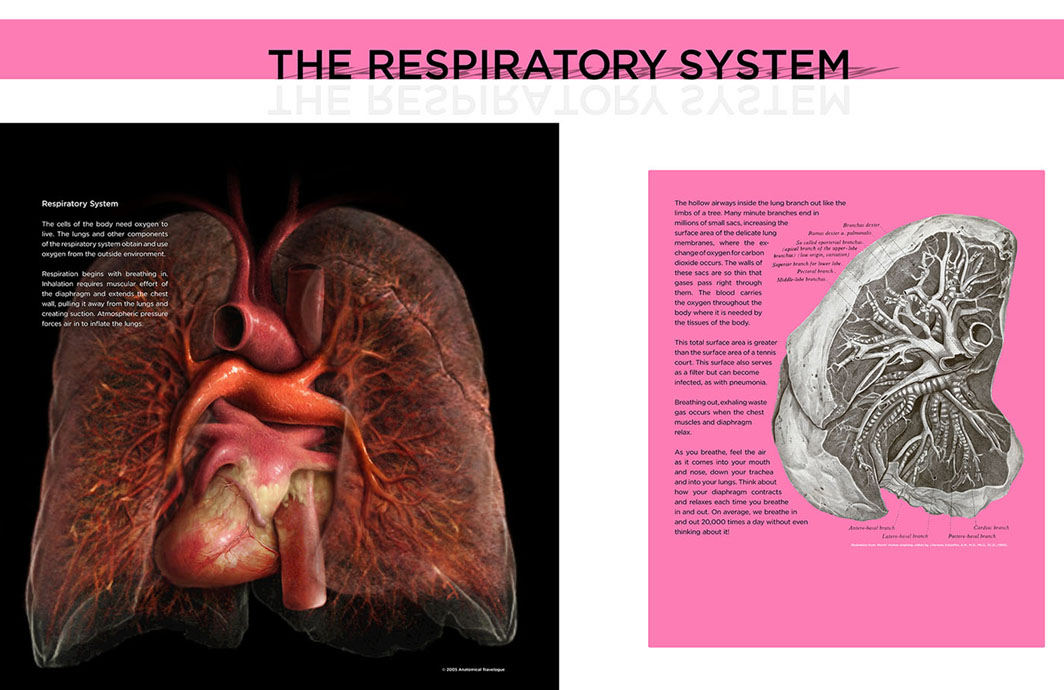 The primary function of the respiratory system is gas exchange. The lungs maintain a concentration gradient between oxygen and carbon dioxide, such that incoming oxygen-rich air is exchanged for outgoing air with high concentrations of carbon dioxide. The body requires oxygen in order to produce energy required for cellular activity.
The primary function of the respiratory system is gas exchange. The lungs maintain a concentration gradient between oxygen and carbon dioxide, such that incoming oxygen-rich air is exchanged for outgoing air with high concentrations of carbon dioxide. The body requires oxygen in order to produce energy required for cellular activity.
Respiration begins with inhalation that occurs when the diaphragm, a dome shaped muscle below the lungs, is contracted. This contraction increases the negative pressure in the thoracic cavity pulling air toward the lungs. Air flows into the trachea (windpipe) that branches into the right and left bronchi and then flows further into various smaller bronchioles, which branch out like the limbs of a tree. Eventually air arrives at the end of the branches that terminate in millions of small sacs or alveoli where the exchange between oxygen and carbon dioxide occurs. The membranes of the alveoli are thin enough for gases to pass through them into the blood that is then carried to various tissues throughout the body.
This total surface area of adult human alveoli measures 70 m2 on average. This great amount of surface area makes it susceptible to infection by invading organisms; however, lung tissue is filled with macrophages that help to rid the body of foreign particles including pathogens. An infection of the lungs is called pneumonia.
After inhalation the diaphragm is relaxed and waste carbon dioxide gas is exhaled into the atmosphere. On average, we breathe in and out 20,000 times a day without even thinking about it!

- Visibly Human Health and Disease in the Human Body
- The Cardiovascular System
- The Urinary System
- Respiratory System
- The Lymphatic System
- The Musculoskeletal System
- The Liver and Hepatic System
- The Digestive System
- The Brain and Nervous System
- Psychiatric Patients at Forest Glen
- Skeleton of Spanish American War Veteran Showing Evidence of Severe Arthritis




